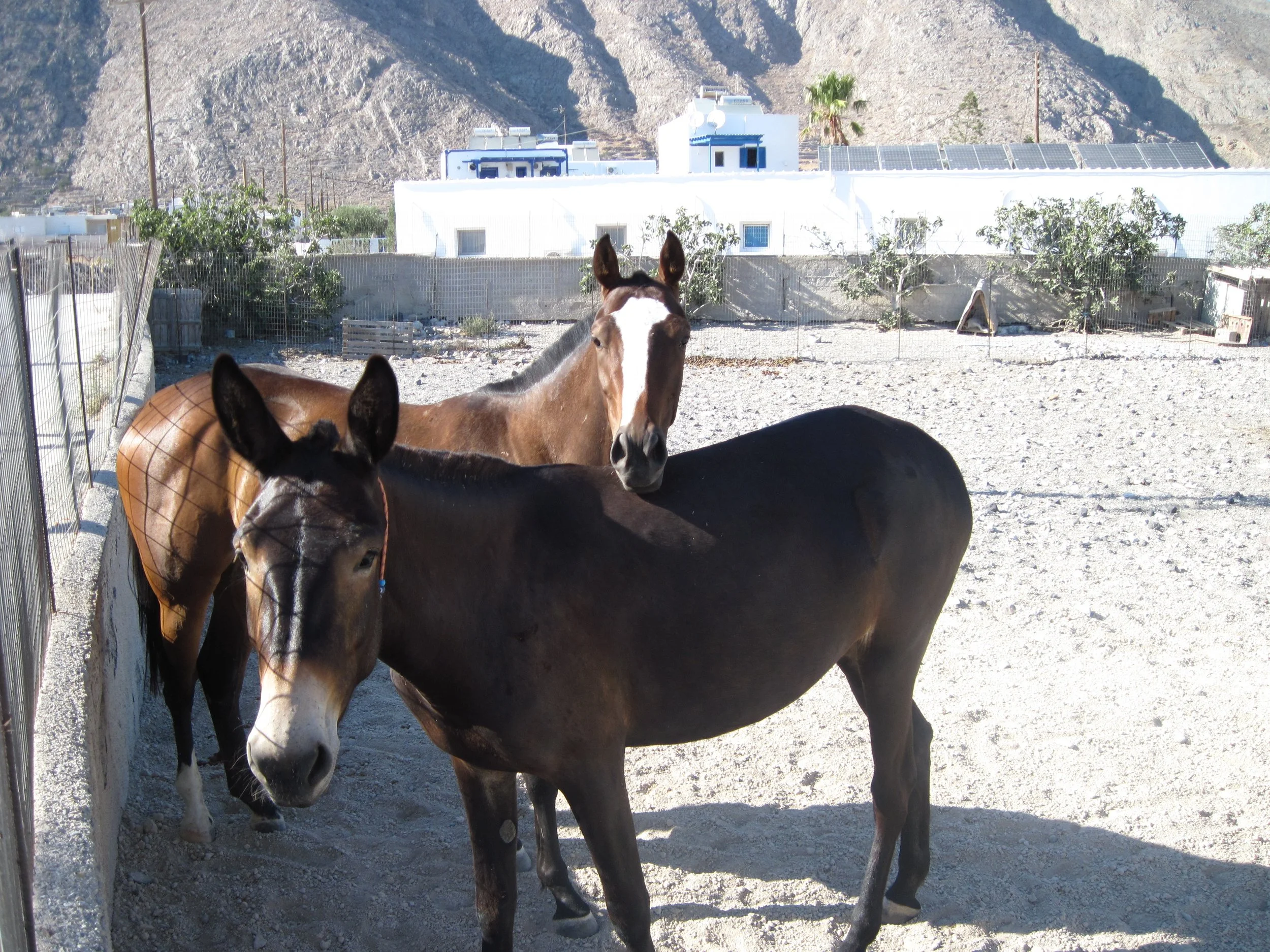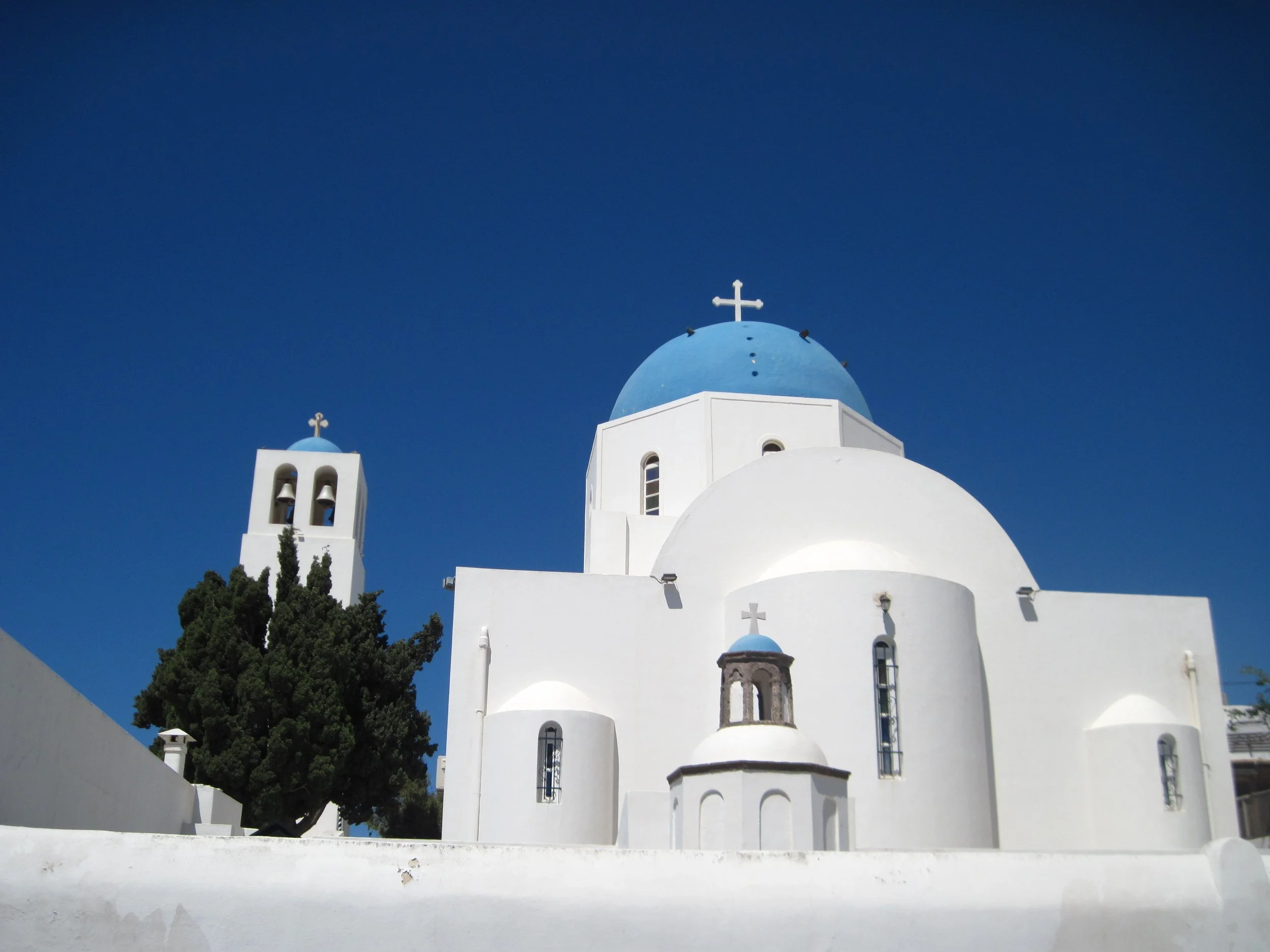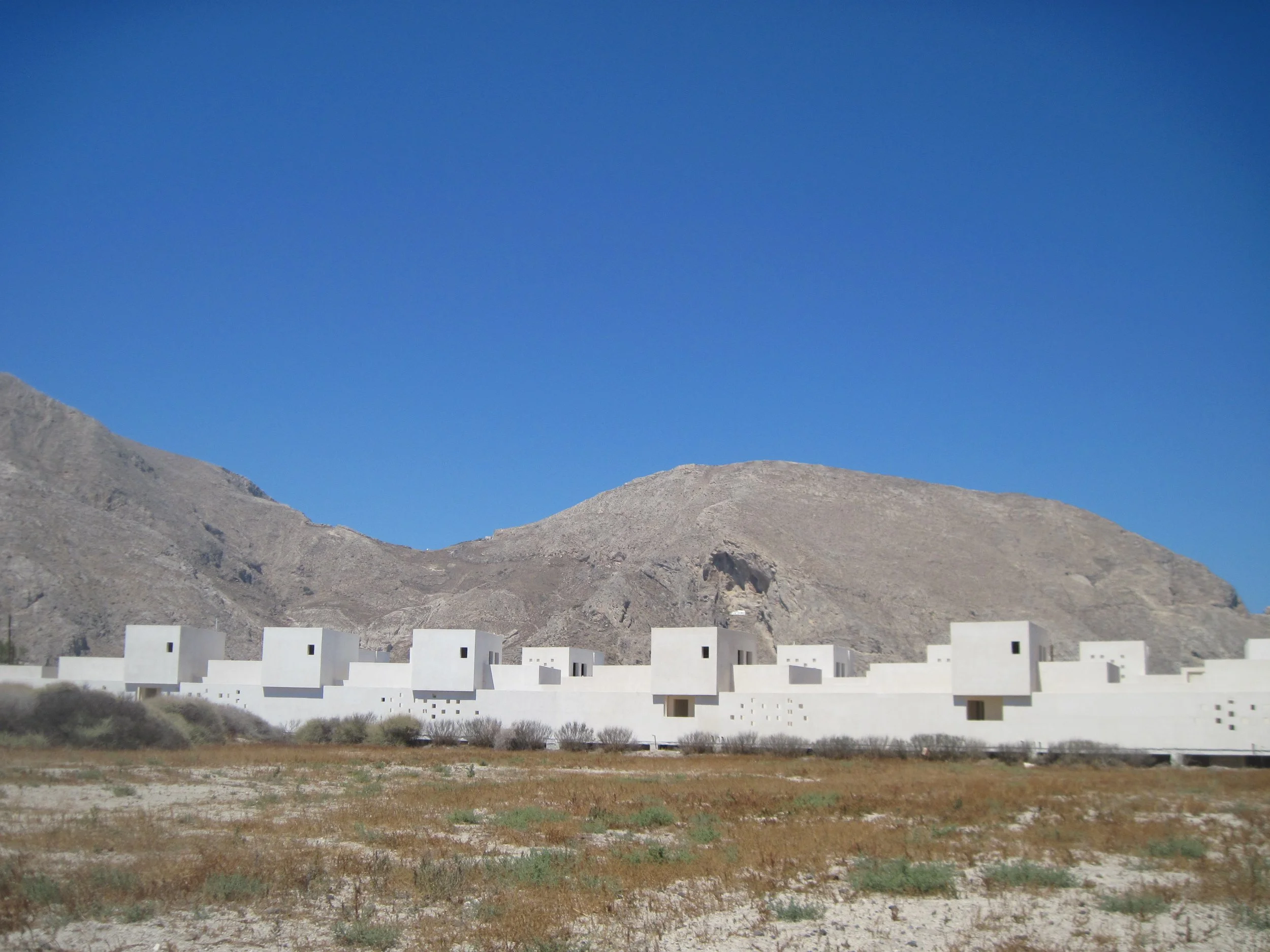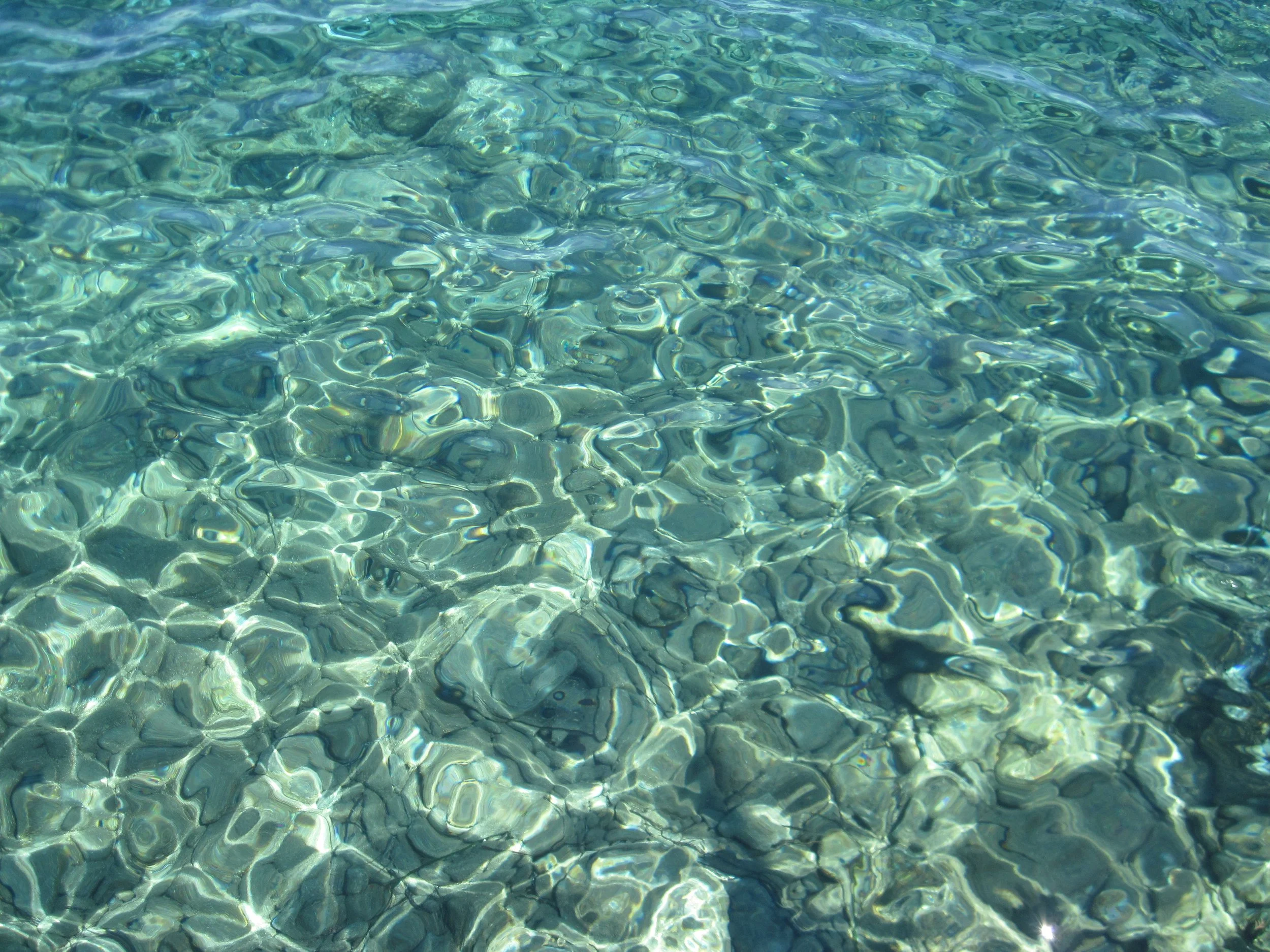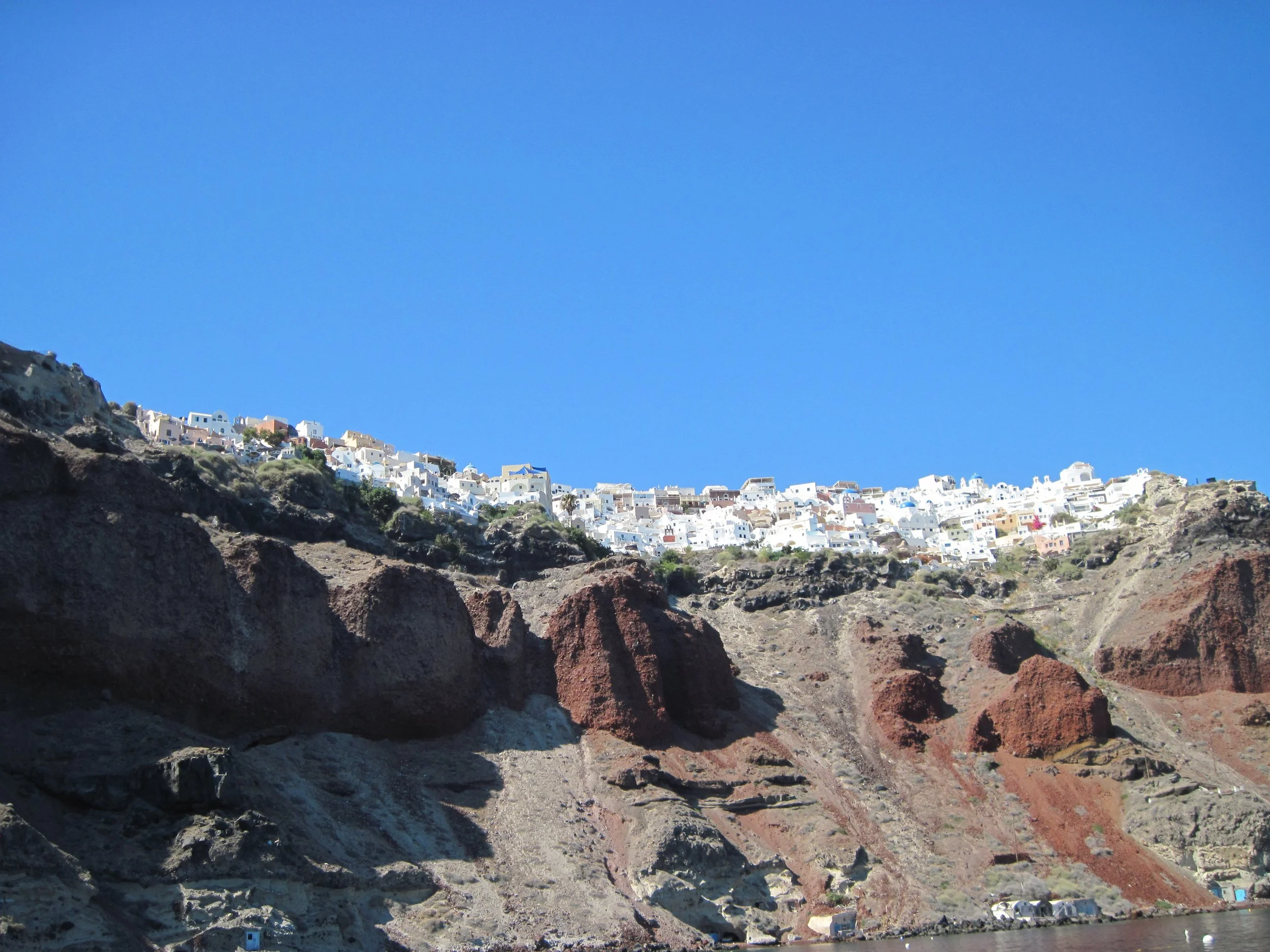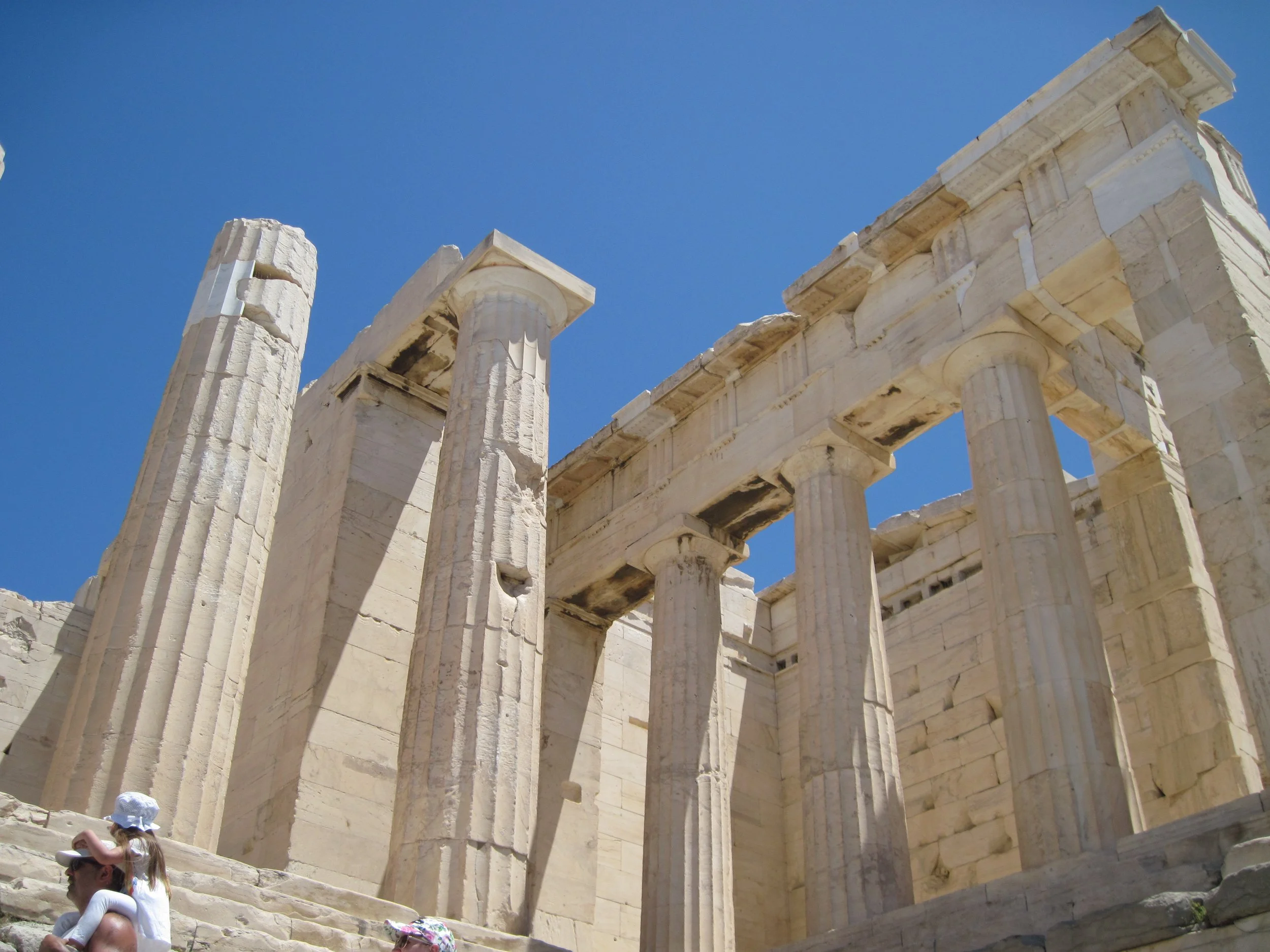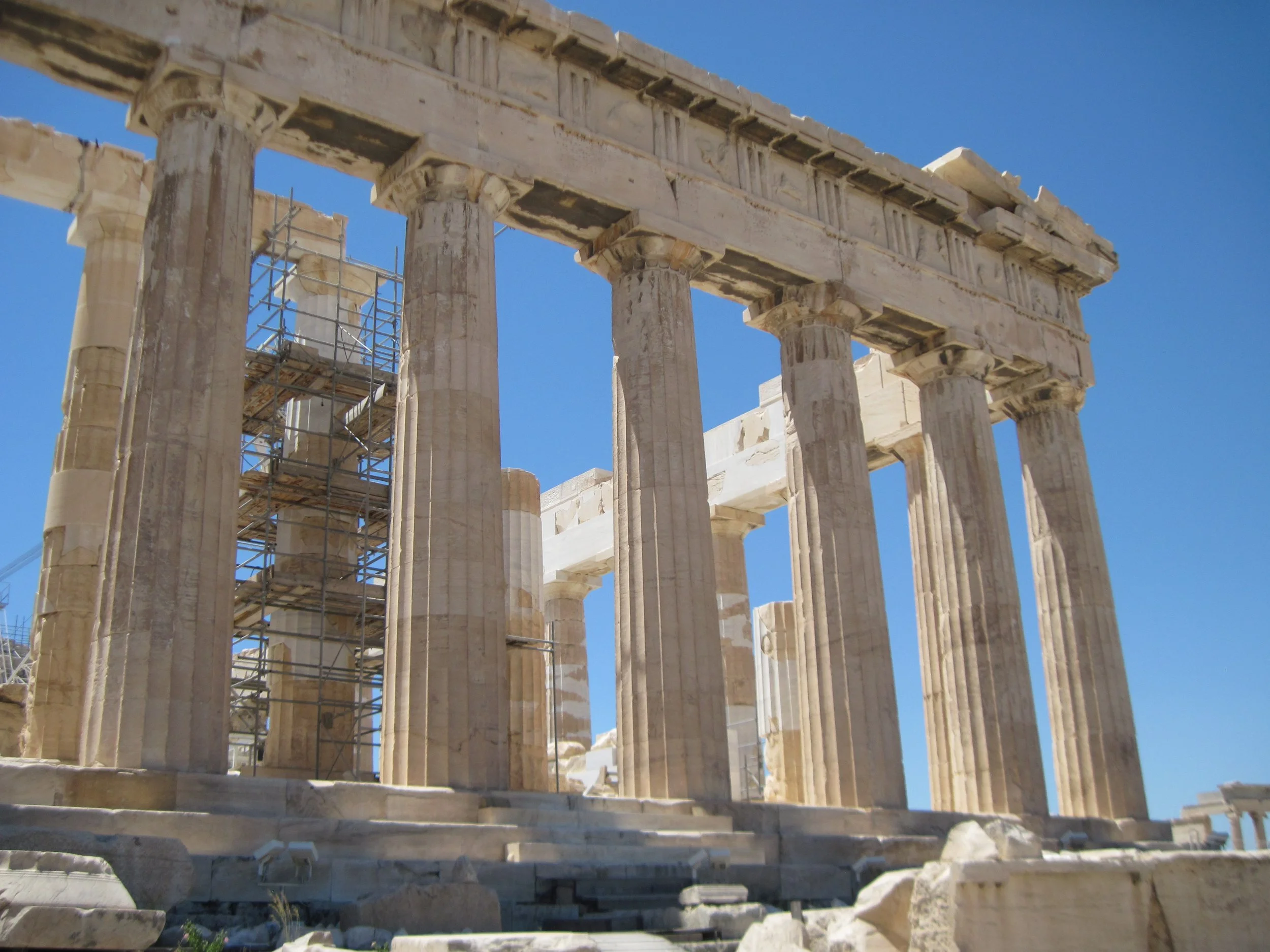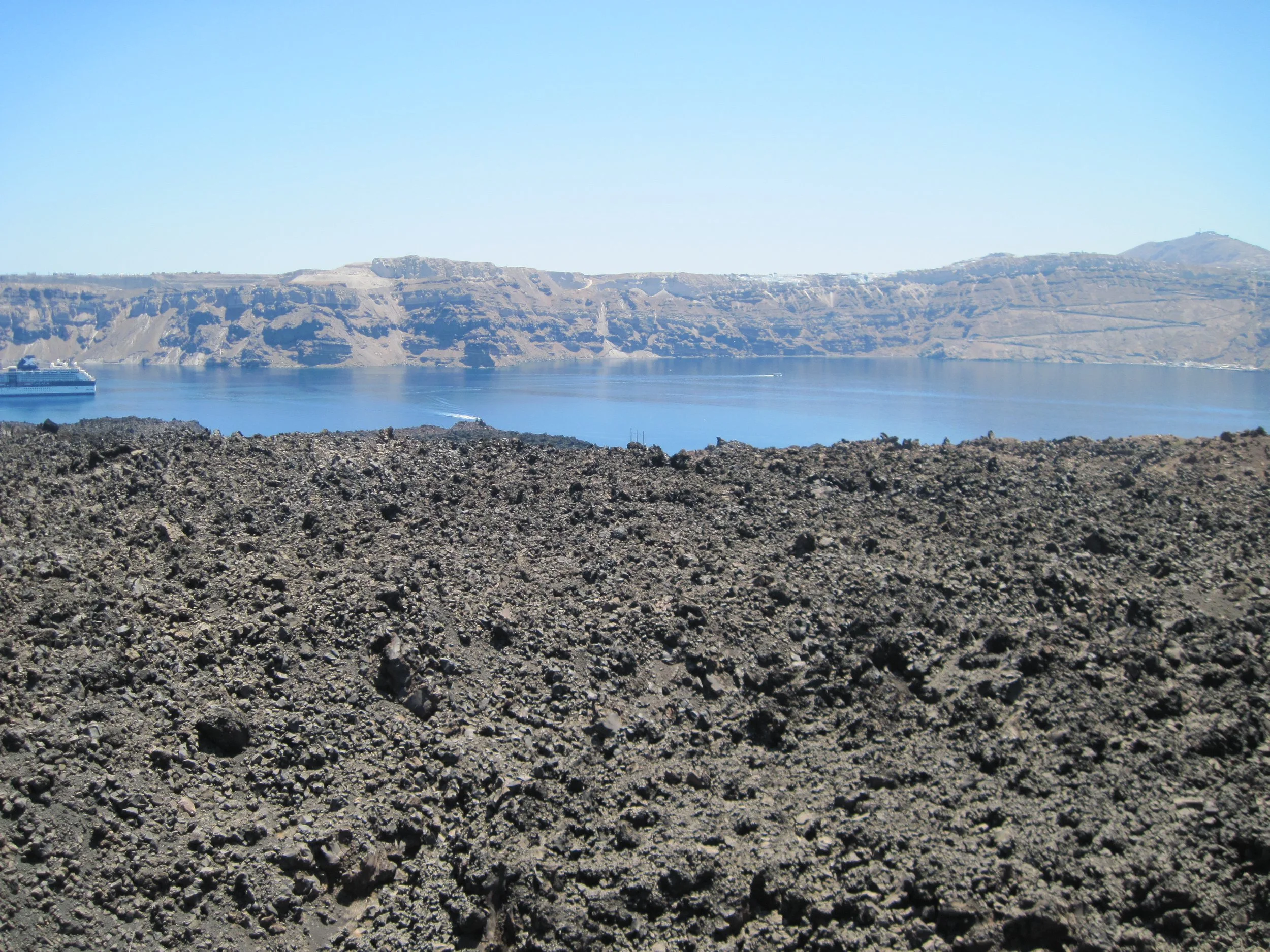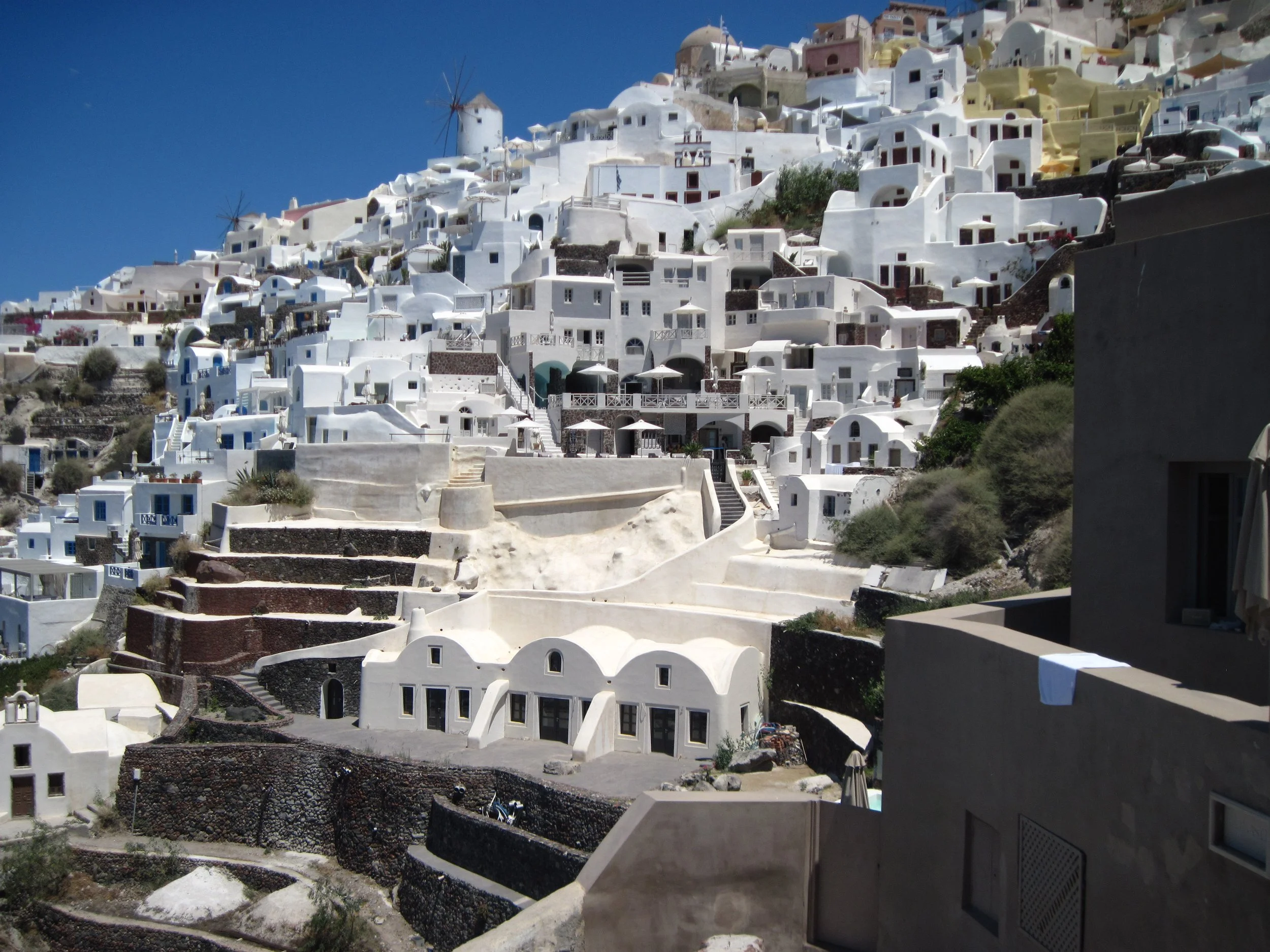Volcanic sulfur of Santorini Island
A study of observed phenomena on Greek islands through the lens of shifting weather patterns, urban development and century-old traditions.
Researched and written in July 2025.
Words and visuals by Angelica Ruzanova.
Stucco walls are home to many habitants in the town of Artemida. Ants of all sizes scatter about, with wild aloe and abandoned oranges growing in and out of untamed soils.
Stucco, the light-colored plaster commonly seen on Greek homes, provides passive cooling through its high solar reflectance, acting as an albedo mechanism that reduces heat absorption. To lower its carbon footprint, builders are increasingly using lime-based mixes.
The non-threatening dryness of the weather is not the same as the survival of the vertical sun. Athens sees 300 sunny days per year, with Meltemi winds revealing a deeper tan of olive and Aleppo pine trees. Even then, bronzed locals dance a kalamatianos in a 12-step circle, forming their own sun.
In summer, northern winds sweep down the Aegean and reveal a “blue ceiling.” They push away moisture and pollution, with the Urban Heat Index temperatures in large cities still exceeding those in rural areas.
Off of Thirasia café ledges, one sees the eternally morphing, seducing evil eyes of the warping waves. There you may begin the study of morphology - how movement flows and energy returns.
“It is not only crystal clear,” said our guide about the waters below the Nea Kameni volcano. “It is also clean.”
Despite a muddy appearance in some areas due to volcanic sulfur, Aegean waters are filtered through a process of natural geothermal circulation and seabed mineral filtration. Rising sea temperatures and increased coastal erosion threaten these processes.
Greece’s deep blue flag with white stripes resembled the layers of the coastline, and myth and landscape were once more intertwined.
Glistening waters come close to being as blinding as the sparkling metal roofs of Athens, as overseen from the Acropolis. The ancient pillars are supported by metal rods, intimidating walkers all the way from Socrates’ prison.
Modern archaeological preservation in Greece combines ancient know-how (like traditional marble carving) with high-tech innovation (such as laser ablation for surface cleaning and 3D photogrammetry) to keep its cultural relics intact.
Are the eruptions that bury these cities considered Greek tragedies? Cycladic art makes one believe in the heroism instead - in true colors of humanity, with no mention of the once-beloved belongings.
The newest land of the Santorini archipelago is on the volcano itself, built by lava and ash from its 1950 eruption. Since then, scientists have used advanced monitoring to detect unrest weeks or months in advance, which helps inform timely evacuations.
In Koropi, fighting cats show off their sopranos on a sidewalk occupied by a seafood stall. An overfed dog sleeps in front of a drying carpet hanging off a balcony, unamused.
Nearly 300 steps descend to the Ammoudi pier in the town of Oia, with donkey manure as a pungent trace of centuries-old tradition when surefooted animals hauled people and goods from sea to summit.
At a local gyro place outside of Pressia, we witness an explosion of a motorized air fan. The cooks come out to diagnose the problem - but it is left untreated, with a caged parrot hanging on the same wall.
This is also where my brother - the older one - was taught to drive a manual transmission car.
